Corsair CX450 PSU Review: Two Flavors, Tested and Compared
Why you can trust Tom's Hardware
Teardown & Component Analysis
Before reading this page we strongly encourage you to a look at our PSUs 101 article, which provides valuable information about PSUs and their operation, allowing you to better understand the components we're about to discuss.
CX450 - Great Wall
| General Data | |
|---|---|
| Manufacturer (OEM) | Great Wall |
| Platform Model | GW-ATX450BL |
| Primary Side | |
| Transient Filter | 4x Y caps, 2x X caps, 2x CM chokes, 1x MOV |
| Inrush Protection | NTC thermistor |
| Bridge Rectifier | GBU1508 (800V, 15A @ 100°C) |
| APFC MOSFETs | 2x ROHM R6020ANX (600V, 9.7A @ 100°C, 0.22Ω) |
| APFC Boost Diode | STi STTH8S06FP (600V, 8A @ 150°C) |
| Hold-up Cap | 1x Nippon Chemi-Con (450V, 220uF, 2-3000h @ 105°C, KMM) |
| Main Switchers | 2x Jilin Sino-Microelectronics JCS18N50H (500V, 11A @ 100°C, 0.27Ω) |
| APFC Controller | Champion CM6500UNX & CM03X Green PFC controller |
| Resonant Controller | Champion CM6901 |
| Topology | Primary side: Half-bridge & LLC resonant controller Secondary side: Synchronous rectification & DC-DC converters |
| Secondary Side | |
| +12V MOSFETs | 2x Silan Microelectronics SVD3205T (55V, 80A @ 25°C, 8mΩ) |
| 5V & 3.3V | DC-DC Converters: 6x A-Power AP0403GH (30V, 50A @ 100°C, 4.5mΩ) PWM Controller: APW7159C |
| Filtering Capacitors | Electrolytics: Elite EJ (3-5000h @ 105°C), ED (2-5000h @ 105°C), EK (2-5000h @ 105°C), 1x Teapo (3-6000h @ 105°C, SY), 1x Rubycon (105°C) Polymers: Nichicon (LF) |
| Supervisor IC | Sitronix/Infinno ST9S429-PG14 (OCP, OVP, UVP, SCP, PG) |
| Fan Model | Yate Loon D12SM-12 (120mm, 12V, 0.30A, 1700 RPM, 72CFM, 34 dB(A), rifle bearing) |
| 5VSB Circuit | |
| Rectifier | A-Power AP04N60H-HF (600V, 2.2A @ 100°C, 2.5Ω) |
| Standby PWM Controller | SI8016HSP8 |


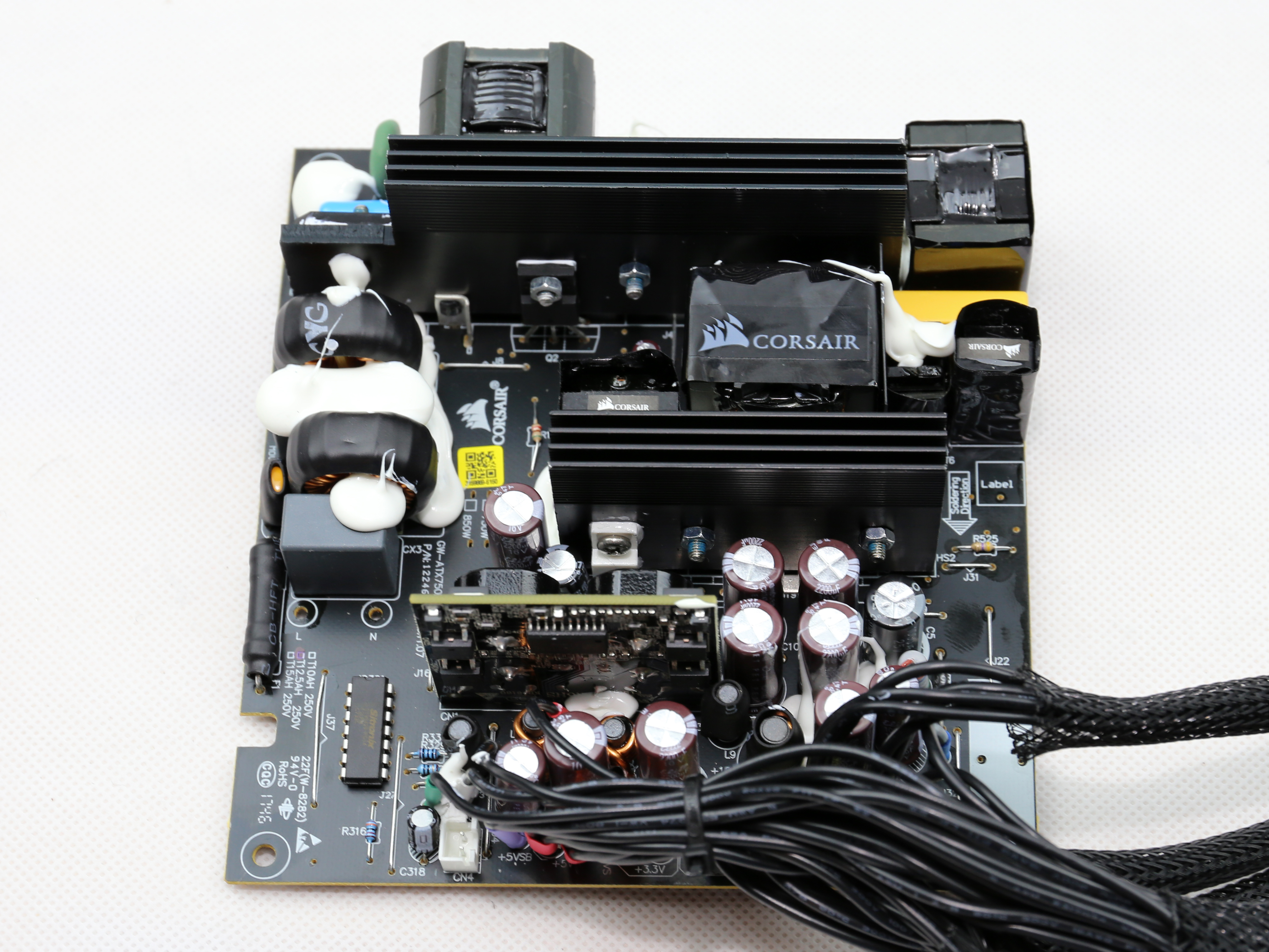




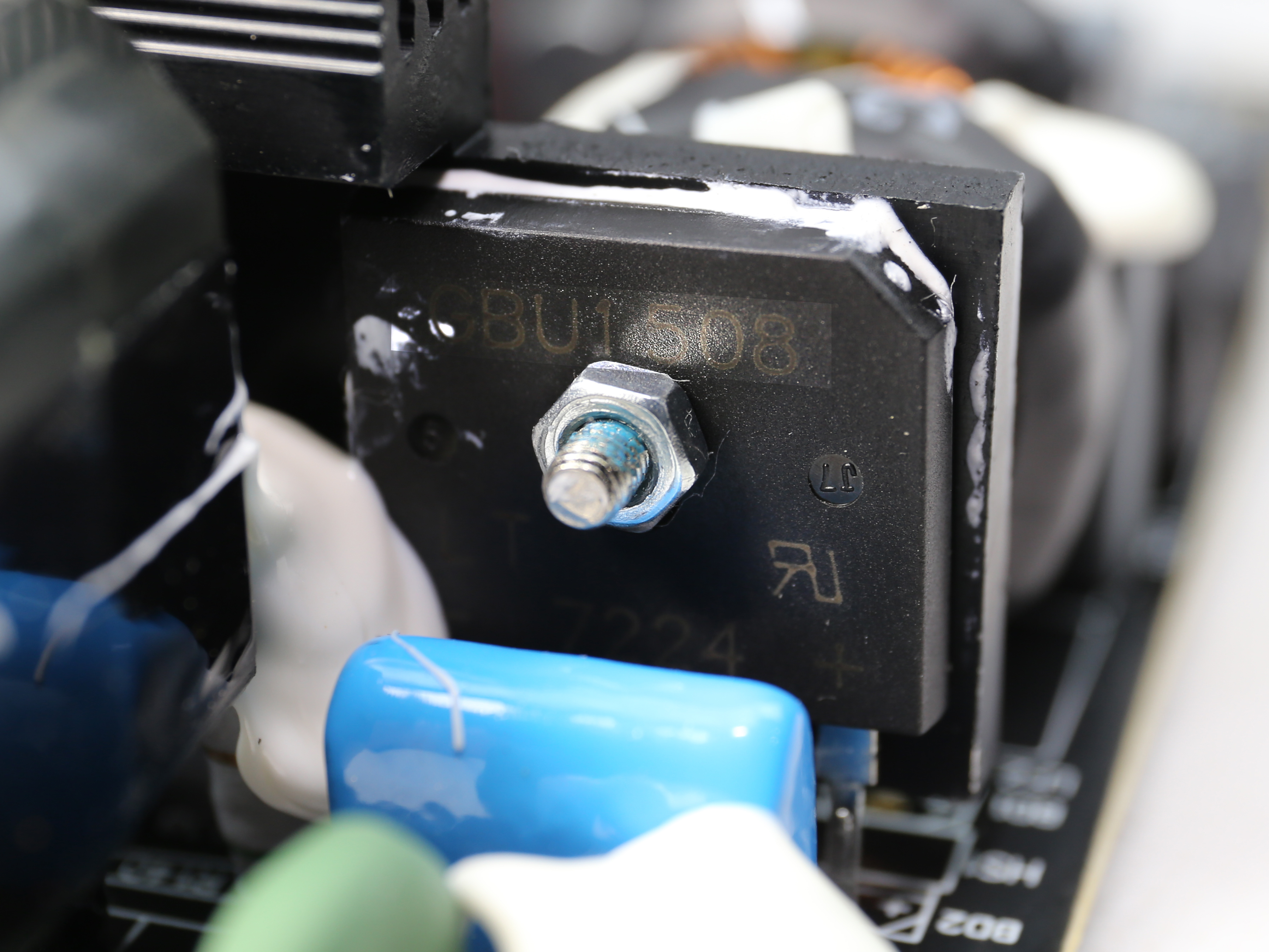







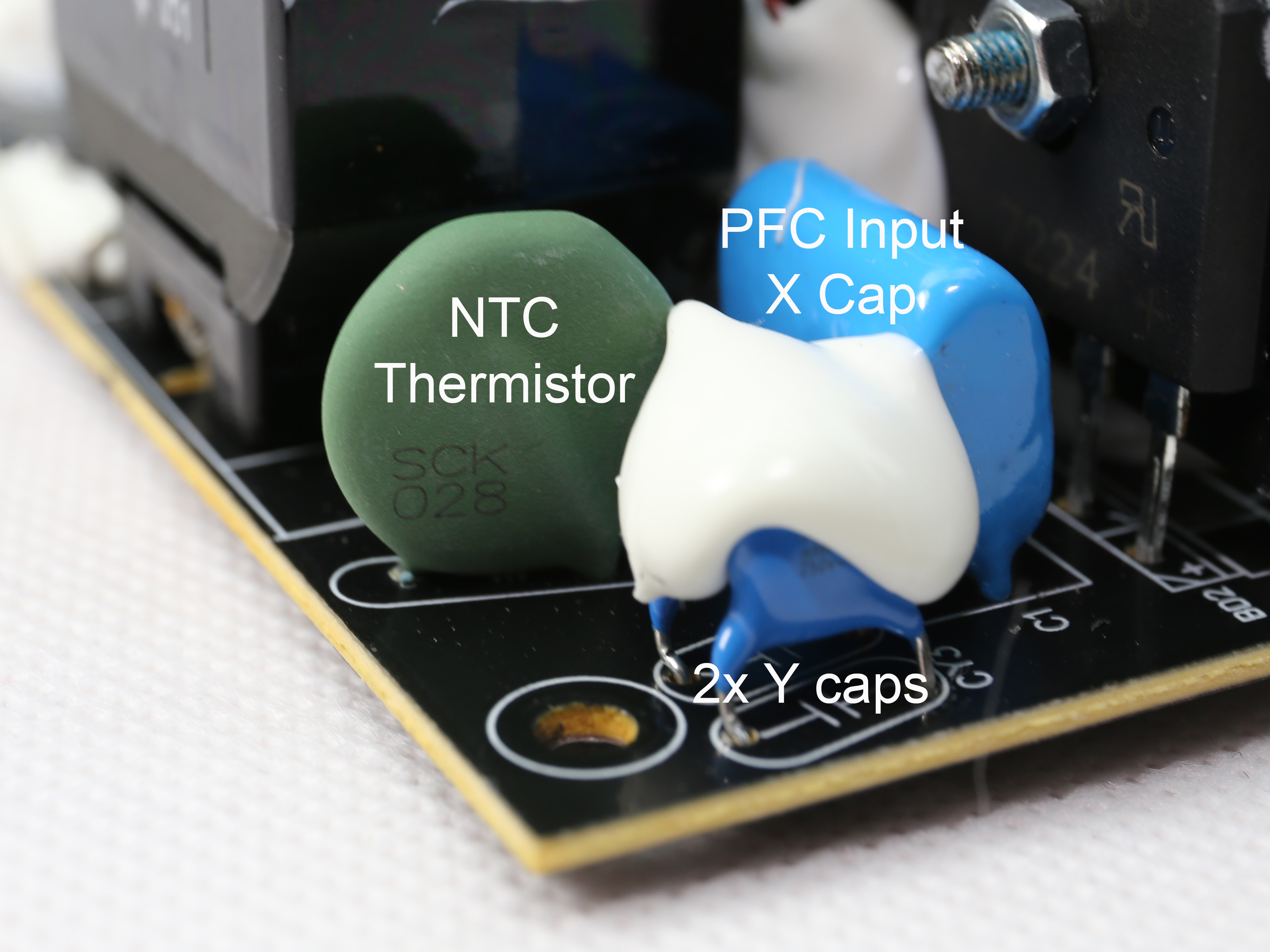






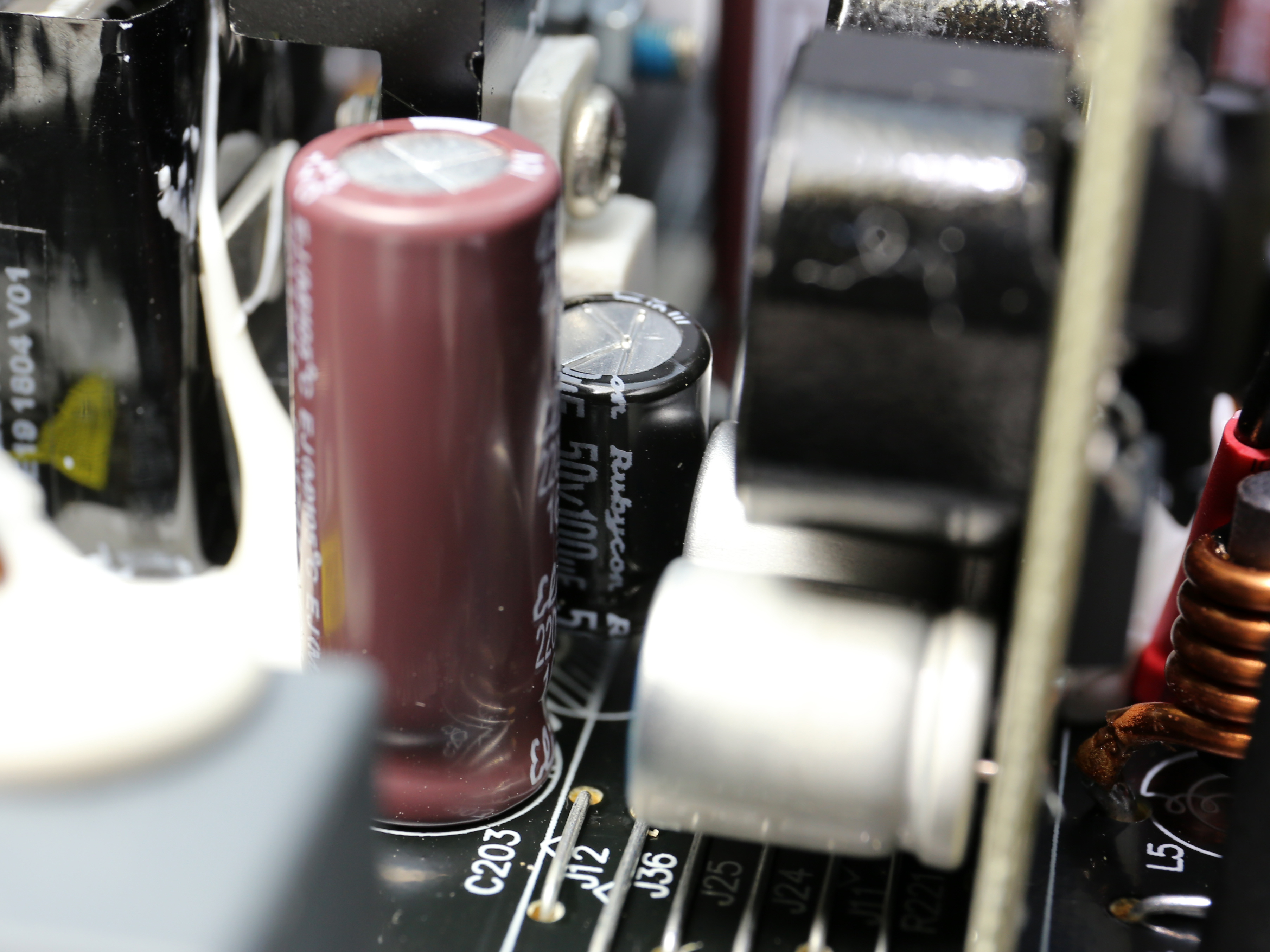

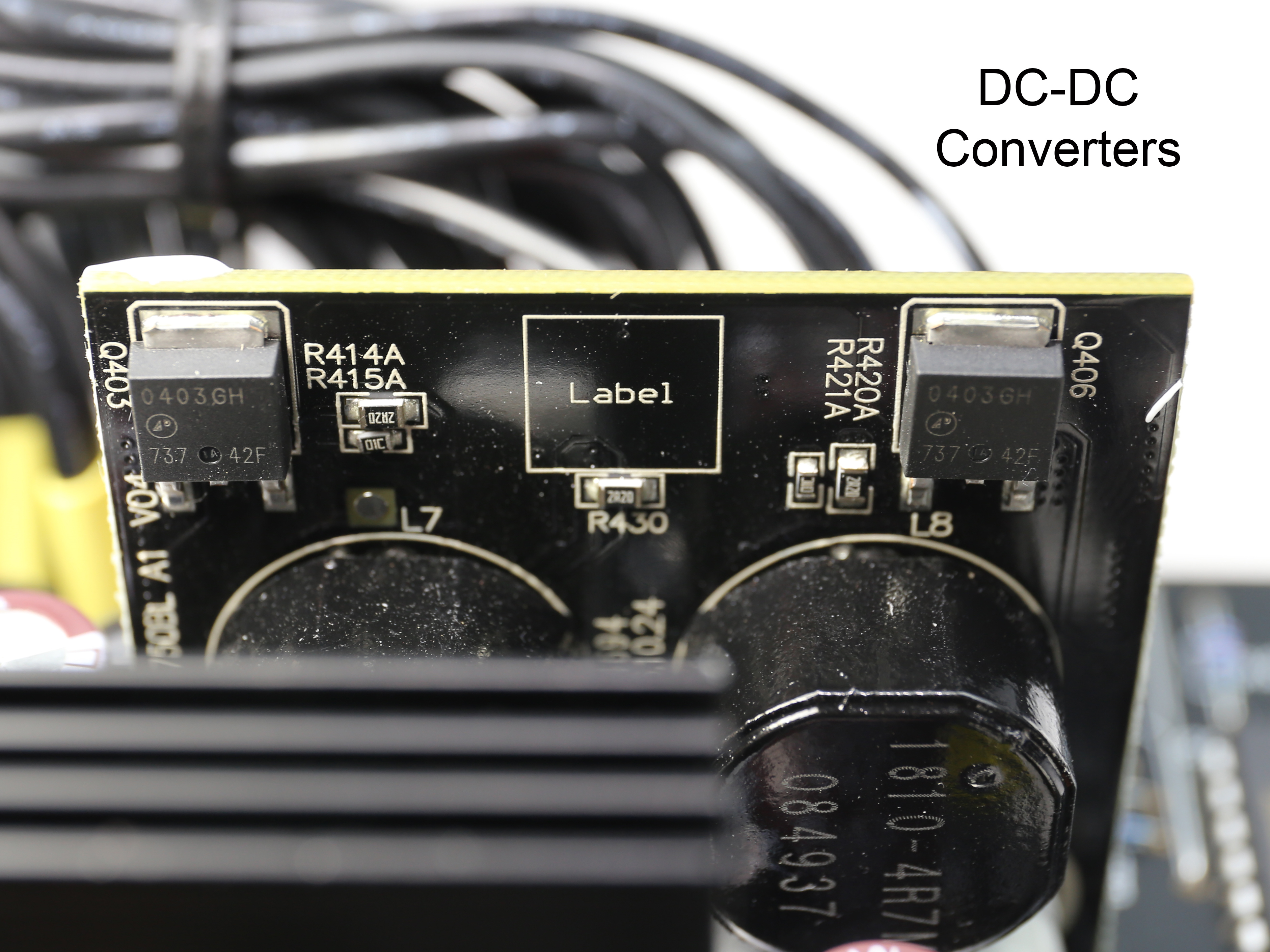




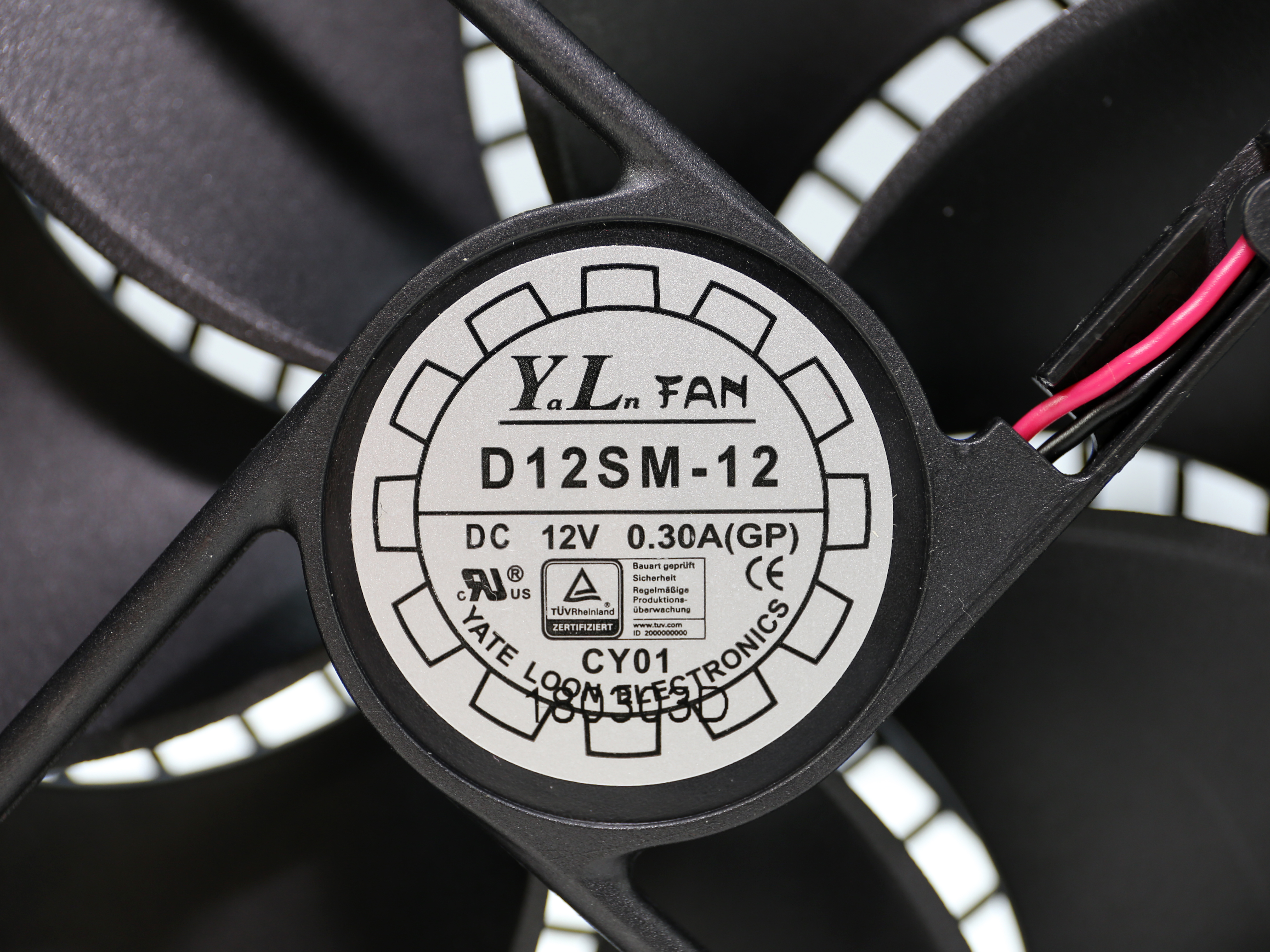
CX450 - CWT
| General Data | |
|---|---|
| Manufacturer (OEM) | Channel Well Technology |
| Platform Model | Custom |
| Primary Side | |
| Transient Filter | 4x Y caps, 3x X caps, 2x CM chokes, 1x MOV |
| Inrush Protection | NTC thermistor |
| Bridge Rectifier | 1x |
| APFC MOSFETs | 2x Silan Microelectronics SVF13N50F (500V, 10A @ 100°C, 0.52Ω) |
| APFC Boost Diode | STi STTH8S06FP (600V, 8A @ 150°C) |
| Hold-up Cap | 1x Nippon Chemi-Con (450V, 180uF, 2000h @ 105°C, KMR) |
| Main Switchers | 2x Silan Microelectronics SVF13N50F (500V, 10A @ 100°C, 0.52Ω) |
| APFC Controller | Infineon ICE3PCS01G - CM03X |
| Resonant Controller | Infineon ICE2HS01G |
| Topology | Primary side: Half-bridge & LLC resonant controller Secondary side: Synchronous rectification & DC-DC converters |
| Secondary Side | |
| +12V MOSFETs | 4x |
| 5V & 3.3V | DC-DC Converters: 2x Ubiq QM3016D (30V, 68A @ 100°C, 4mΩ), 2x Ubiq QM3006D (30V, 57A @ 100°C, 5.5mΩ) PWM Controller: APW7159C |
| Filtering Capacitors | Electrolytics: Elite ED (2-5000h @ 105°C), 1x Chemi-Con (4-10,000h @ 105°C, KY) Polymers: Elite (RP, RH, GT), Apaq |
| Supervisor IC | Weltrend WT7502 (OVP, UVP, SCP, PG) |
| Fan Model | Hong Hua HA1225M12F-Z (120mm, 12V, 0.45A, 2050 RPM, rifle bearing) |
| 5VSB Circuit | |
| Rectifiers | CET CEF04N7G (700V, 4A, 3.3Ω), Vishay SBL1040CT (40V, 10A) |
| Standby PWM Controller | On-Bright OB5269 |





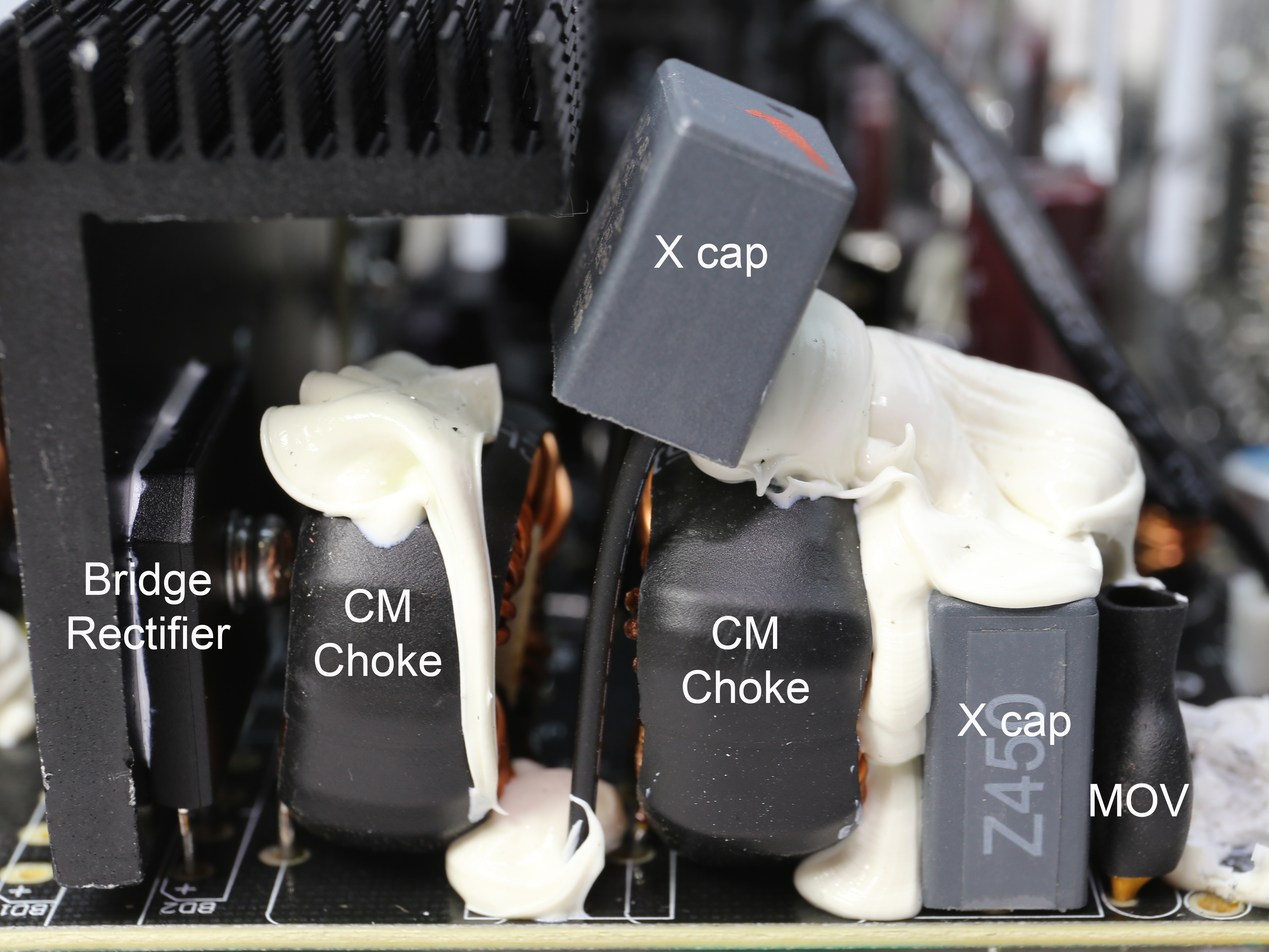





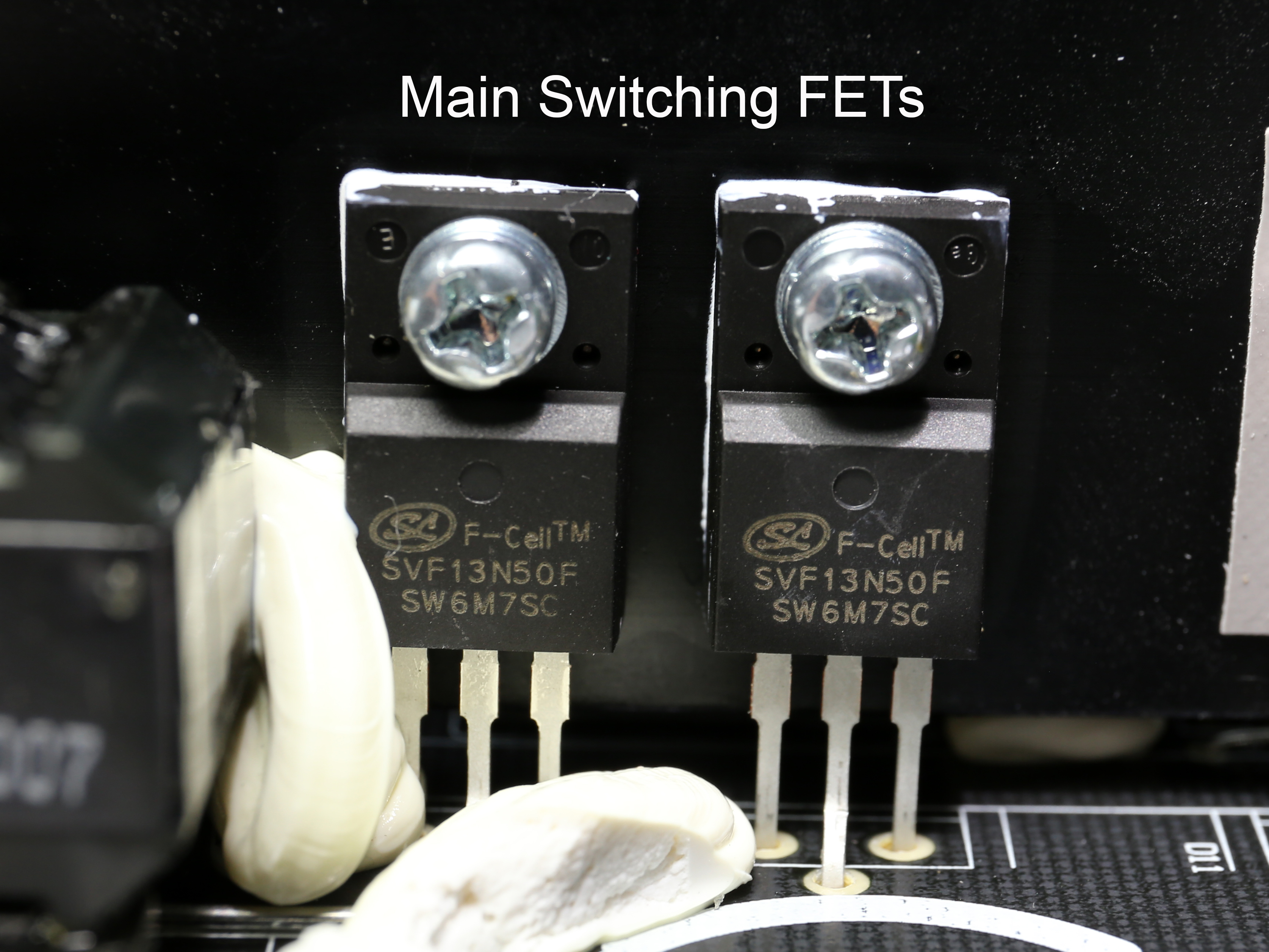









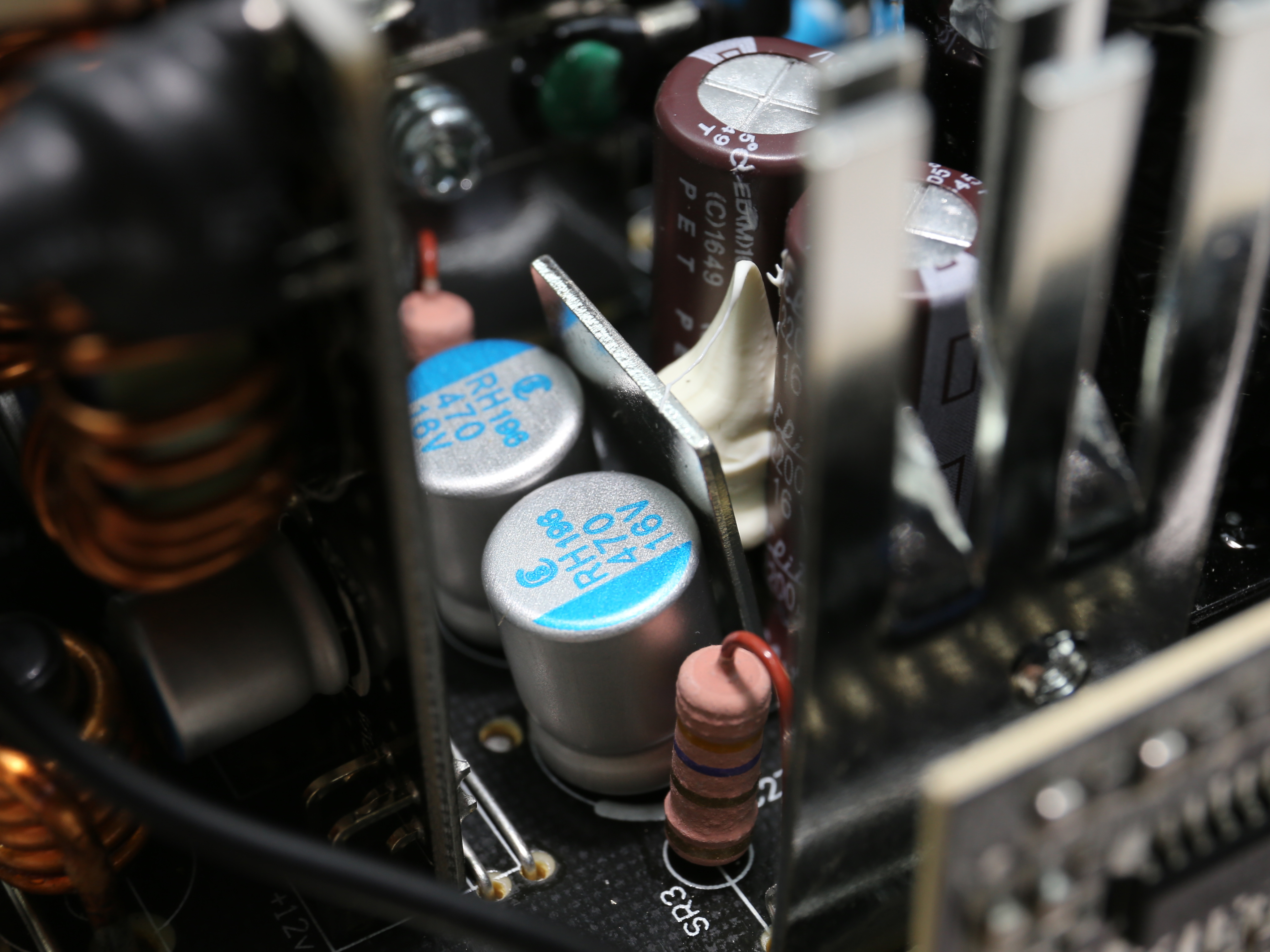










Video - Part Analysis
Both versions of the CX450 employ modern platforms featuring LLC resonant converters and voltage regulation modules for generating the minor rails. In such low-efficiency PSUs, the use of LLC resonant converters appears to be overkill. But they still represent an advantage over older designs, since those converters facilitate higher efficiency under light loads.
Both configurations have Elite brand electrolytic capacitors. We're not particularly fond of Elite caps, but it's hard to be picky in this price range. CWT's design uses fewer electrolytic caps and more polymer ones, which are resilient against tough ambient conditions. Moreover, the CWT-based CX450 uses a higher-quality fan with a fluid dynamic bearing. On the other hand, Great Wall's version of the CX450 utilizes a more sophisticated supervisor integrated circuit. It also boasts better soldering quality than CWT's platform.
In general, both PSUs represent good build quality. The CWT version boasts a better fan and more polymer caps, while the Great Wall model has an advantage in its soldering quality and larger bulk capacitor. In terms of design, the Great Wall platform looks cleaner. However, the CWT version uses a higher number of FETs for regulating the +12V rail, reducing thermal load on the secondary side.
The following video shows the CX450’s internals. (We disassembled both configurations.)
MORE: Best Power Supplies
MORE: How We Test Power Supplies
Get Tom's Hardware's best news and in-depth reviews, straight to your inbox.
MORE: All Power Supply Content
Current page: Teardown & Component Analysis
Prev Page Unboxing Video Next Page Load Regulation, Hold-Up Time & Inrush Current
Aris Mpitziopoulos is a contributing editor at Tom's Hardware, covering PSUs.
-
jpe1701 Oh thank you Aris, I've been waiting for a review of this. It's always low in price and tempting to recommend but there weren't any reviews.Reply -
Darkbreeze Why do both of the review summary boxes list the Great Wall version? Both the one on the front page and the last page are the same. Seems like you ought to include a summary box for both versions since there seems to be some major differences between them. And even more so since you seem to indicate the CWT version is the better unit, but only include a summary box for the Great Wall unit.Reply -
Darkbreeze I totally understand. No worries mate. Editorial has a bad habit of effectively pooping all over the independent contributors writing as well. Not surprising that they are doing so with your work, but I sure wish somebody in editorial would make a few changes to policy that keeps the finished product a bit more in line with what the contributor intended, which often they don't. In this case, it totally makes zero sense that they didn't leave it as you had it.Reply -
Rexper ReplyWe preferred CWT's version of Corsair's CX450, but that doesn't mean you should avoid Great Wall's
Not that we have a choice.
Great article, once again, Aris!
There is some controversy appearing relating to the fan bearings used in the CX450. JonnyGURU, who works at Corsair, claims both CX450 versions use a rifle bearing.
Unfortunately, we can't know for certain until someone dismantles the fan.
http://www.jonnyguru.com/forums/showthread.php?t=15943&page=2 -
Darkbreeze I don't think it even makes a tremendous amount of difference. Fan failure on power supplies due to bearing fatigue is the least of the issues I've usually seen in the past on older units. Plus, it's not terribly difficult to replace a PSU fan if you have at least of a modicum of common sense and don't possess four thumbs.Reply
If fan noise is the biggest worry, or bearing failure over the long term, then I'd say these are winners for the price point. Most would never hear them over the sound of the rest of the system in any case.